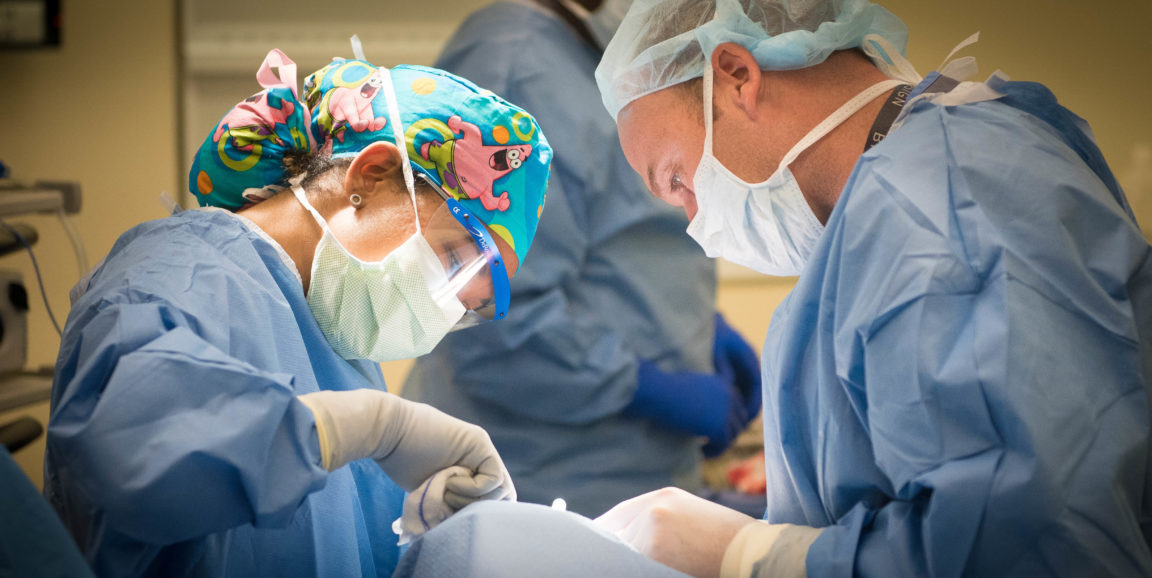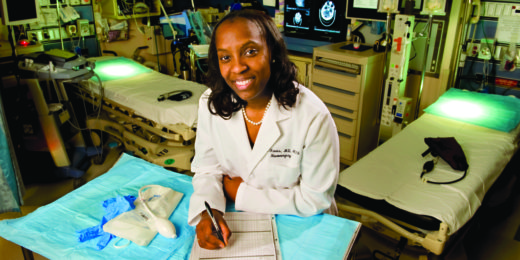A few weeks ago, Auriel August, MD, reached out to me for photos of her at work in the OR. As the Department of Surgery's communications person, of course, I wanted to know how they would be used. "A reporter might be writing a story," she told me, but wouldn't divulge any more details because she didn't want to jinx the opportunity.
I've known August since she started at Stanford as an intern. She's smart, kind, and people trust her with their lives on the regular. (I mean, she's a surgeon). So, I agreed to the blind request and sent over a few of my favorite images.
You can imagine my surprise when those same pics appeared in conjunction with a feature on Forbes earlier this week. From the piece:
Stanford general surgery resident Auriel August decided to become a surgeon at eight years old. Yet growing up, she couldn't find a popular black female surgeon to look up to. It's why two years ago she started the Twitter account, @blackgrlsurgeon, so she could be out in the open for anyone in search of a role model.
'I want to be a visible face in academic surgery,' she says, 'So young Black girls have someone to look up to and say, 'I can be like this.''
From selfies while on call to peer-reviewed research, August has been publicly chronicling her experience as an openly gay, black, female surgeon. She's also a volunteer with Stanford Cancer Center's Peer Navigators program, will be starting a Biodesign Innovation Fellowship in July, and wears a SpongeBob SquarePants scrub cap during her pediatric surgery rotation.
I guess I wasn't really that surprised. You're my #shero, Auriel, and after reading this story, I think other people will think so too.
Photo of Auriel August, on left, by Rachel Baker






